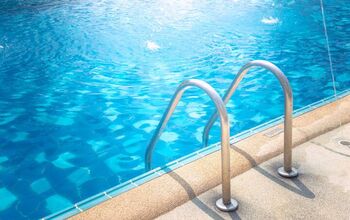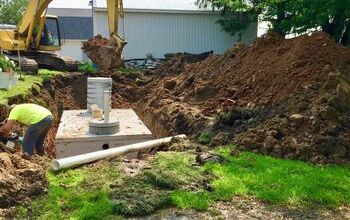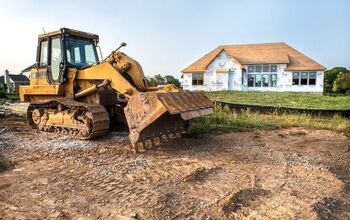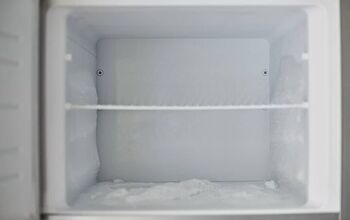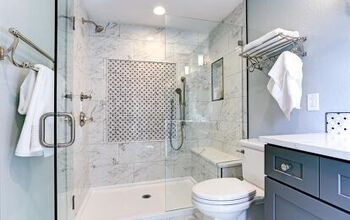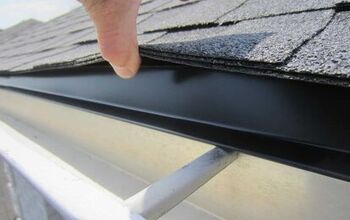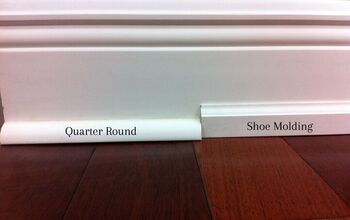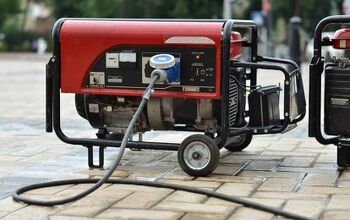How Much Does It Cost To Install A Natural Swimming Pool?

Natural swimming pools are unique and beautiful, and they’re becoming more popular. However, the word “natural” makes this type of pool sound less casual and easier to install than they are. So, how much does it cost to install a natural swimming pool?
You can expect to spend $25,000 to $150,000 to install a natural swimming pool. The cost includes the size of the pool, liner, permit, materials, equipment, and labor. You can expect to spend at least $25,000 to install a small 500-square-foot natural swimming pool. Conversely, anything over 1,500 square feet typically costs at least $75,000.
Of course, you can save money if you decline professional help and do a lot of the work yourself. Follow along as we explore how much it costs to install a natural swimming pool.
Cost To Install A Natural Swimming Pool
It can cost between $25,000 and $150,000 to install a natural swimming pool. The installation of a natural swimming pool requires lots of time, materials, and labor, which adds up to an expensive process. That said, the overall cost varies depending on many factors, including:
Materials And Equipment
Some people may believe that natural swimming pools consist solely of dirt and water. However, that’s not the case, and the materials needed to build a natural pool largely determine the cost. For example, you can expect to spend up to $1,300 on the pump and skimmer alone.
Natural pools typically include a 1” to 2” layer of sand, which costs an average of $22.50 per ton. You can save money with silica sand, but zeolite is preferable, albeit more expensive. If you want to include natural stones and rocks, you can expect to spend another $15 to $300 per square foot.
Size
The size of your natural swimming pool is arguably the biggest cost factor. A modest 500 square foot natural swimming pool costs between $25,000 to $50,000 to install. Including river rocks and zeolite sand is what tips the scales closer to the $50,000 price range.
You can expect to spend between $40,000 and $120,000 to install a natural swimming pool. Natural swimming pools measuring 1,500 to 3,200+ square feet cost $75,000 to $150,000 to install. Most people don’t necessarily have space for a natural pool that is that big, however.
Liner
Contrary to what some people may think, a natural swimming pool requires a liner. Without one, the water in your natural pool may seep into the landscape and cause serious problems. A liner can also help prevent the surrounding soil from seeping into the water in your pool.
Reinforced polyethylene (RPE), fiberglass, clay, and concrete are the best liners for natural pools. You can expect to spend $0.25 to $1.20 per square foot for a traditional liner. Clay and gravel liners typically cost $0.50 to $2 per square foot, and they are great options on a budget.
Concrete and fiberglass liners cost $55 to $115 per square foot, and offer the most durability. Be careful when choosing the liner, as it can add thousands of dollars to the overall installation cost.
Miscellaneous Costs
No matter where you live, you most likely need to obtain a permit before you can legally build a natural swimming pool. Depending on where you live, you may only have to spend up to $300 to obtain a permit for your natural pool. However, you may have to spend up to $2,000 if you're installing a natural swimming pool that's large or if you live in a strict municipality.
The other miscellaneous cost is optional, but some people spend extra to install a heater. These typically start at $2,000 and can cost upwards of between $7,000 to $9,500. It can add a lot to the overall cost, but you’ll at least get to use the pool all year.
Labor makes up a big part of the overall cost to install a natural swimming pool. You can expect to spend up to $10,000 on labor, perhaps a little less or more, because it’s a labor-intensive process, as lots of excavation is required.
How To Maintain A Natural Swimming Pool
Some people mistakenly believe that maintaining a natural swimming pool is easier than caring for a traditional pool. While the maintenance chores differ, you must still dedicate a lot of time to taking care of a natural swimming pool. This mostly consists of the following chores:
Skim Daily
Regularly skimming the water is more essential for natural pools than for traditional white bottom pools. That’s because natural swimming pools are often found in locations with plenty of trees and plants, which generate debris. Many natural swimming pools also lack skimmer boxes, so the leaves and debris will sink or float.
Ideally, you should keep a handheld tree skimmer in an easily accessible spot near the pool. You can use a vacuum to clean the bottom of the pool if leaves and plant trimmings sink quickly.
Manage The Water Quality
Managing a traditional swimming pool’s alkalinity is relatively easy because it’s a controlled environment. However, natural swimming pools have the odds stacked against them regarding alkalinity and water quality. Overly acidic water is bad for swimmers, pool equipment, and the plants around your natural swimming pool.
Unlike with traditional pools, you can restore your natural pool’s alkalinity with something as simple as baking soda. If your pool’s pH level drops below 7.2, you can fix it with some baking soda.
Trim The Vegetation
The sight of flowers and trees around a natural swimming pool is enough to entice anyone. However, this gorgeous wildlife can, unfortunately, cause a variety of problems when left unchecked. How often you trim the vegetation depends on your taste and how close the plants are to the water.
For example, twice per year, you may want to heavily prune trees that hang directly over the water. That said, you may want to lightly trim the vegetation around your pool every few months if it doesn’t hang over the water. No matter where the plants are, they will eventually shed leaves and branches.
Brush The Walls And Floor
Like a normal pool, the walls and floor in your natural swimming pool will eventually become filthy. That’s especially true when algae is present, so you must regularly brush the walls and floor in your natural pool. This is arguably one of the easiest natural swimming pool maintenance chores you must keep up with.
Gently scrub the walls and floor of your natural pool once every 1-2 weeks if possible. That said, you must drain your natural pool and deep-clean it once yearly. This is your best chance to brush the walls and floor without having debris float up or sink to the bottom.
Yearly deep cleanings also give you the chance to get a fresh start and ensure no harmful bacteria remains. It’s also much easier to remove stubborn debris, like twigs and branches, when your natural pool is empty.
Are Natural Swimming Pools Safe?
Natural swimming pools are safe, but only if you keep up with maintenance. Like chlorinated swimming pools, natural pools are vulnerable to algae outbreaks. However, natural swimming pools are more prone to algae problems because they rely on a balanced ecosystem.
The wildlife surrounding your natural swimming pool will ultimately determine whether or not algae blooms form. For example, having too many plants in and around your natural pool may overload the water with too many nutrients. This can leave your natural swimming pool more vulnerable to algae blooms.
There is also a risk of finding bugs and animals in your natural pool that could be dangeous. However, that ultimately depends on what type of animals are native to your location. That’s why putting a fence around your natural swimming pool is essential.
Summing It Up
You can expect to spend at least $25,000 to install a natural swimming pool. However, if the pool measures over 1,500 square feet, you’ll likely spend $75,000 or more. You can avoid exorbitant maintenance costs if you scrub your pool weekly and deep-clean it once per year.
Related Guides:

Nick Durante is a professional writer with a primary focus on home improvement. When he is not writing about home improvement or taking on projects around the house, he likes to read and create art. He is always looking towards the newest trends in home improvement.
More by Nick Durante










![How Much Does a Pool Pump Cost? [By Type & Installation]](https://cdn-fastly.upgradedhome.com/media/2023/07/31/9100804/how-much-does-a-pool-pump-cost-by-type-installation.jpg?size=350x220)
![How Much Do Pool Repairs Cost? [By Type & Material]](https://cdn-fastly.upgradedhome.com/media/2023/07/31/9103564/how-much-do-pool-repairs-cost-by-type-material.jpg?size=350x220)
